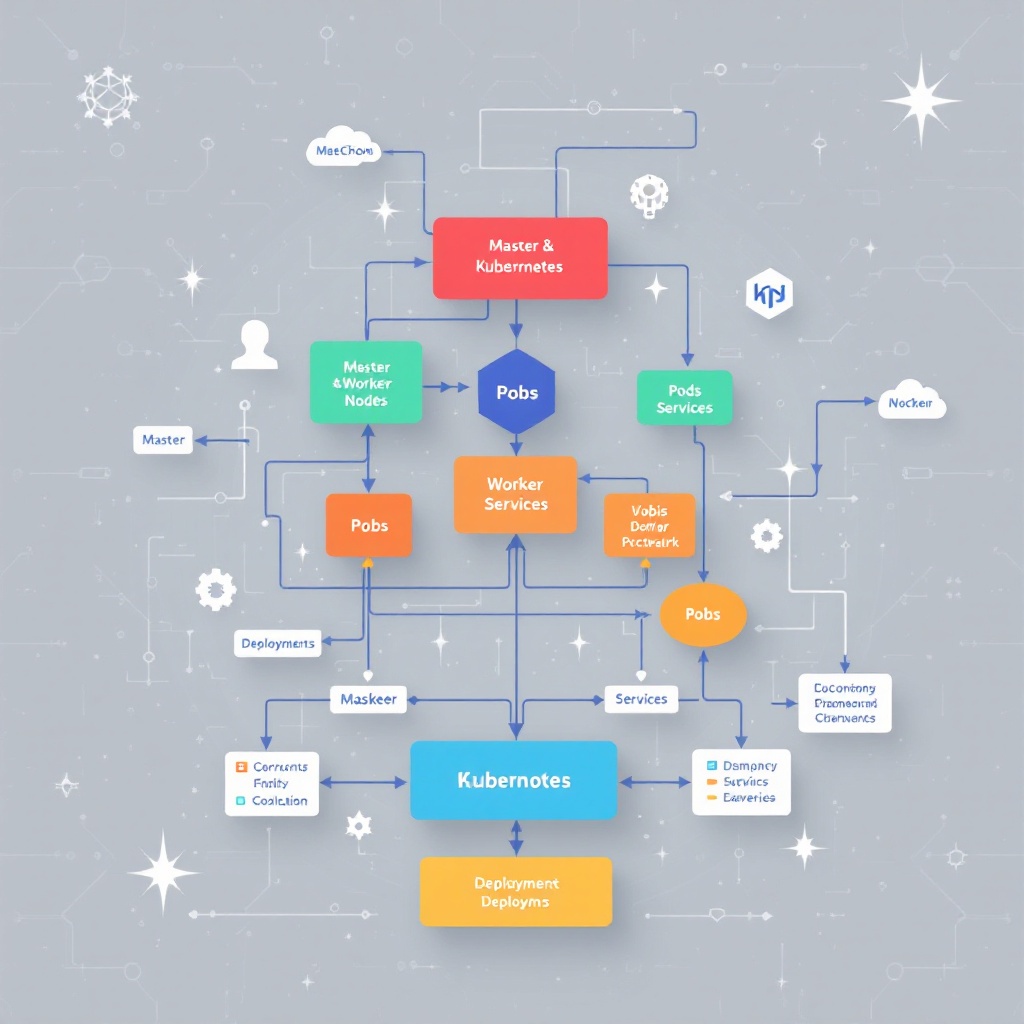In the ever-evolving world of technology, Kubernetes has emerged as a beacon of innovation and efficiency in the realm of container orchestration. This open-source platform, initially developed by Google, has transformed how organizations deploy, manage, and scale applications. As we embark on this exploration of Kubernetes, we will delve into its architecture, features, and the myriad benefits it offers to modern software development.
Understanding Kubernetes: The Basics
Kubernetes, often abbreviated as K8s, stands at the forefront of the cloud-native movement. It provides a robust framework for automating the deployment, scaling, and management of containerized applications. By abstracting the underlying infrastructure, Kubernetes allows developers to focus on writing code rather than worrying about the complexities of deployment environments.
What Are Containers?
Before we dive deeper into Kubernetes, it is essential to understand the concept of containers. Containers are lightweight, portable units that package an application and its dependencies together. Unlike traditional virtual machines, containers share the same operating system kernel but remain isolated from one another. This isolation ensures that applications run consistently across various environments, from development to production.
The Rise of Container Orchestration
As organizations began adopting containers, the need for orchestration tools became apparent. Orchestration refers to the automated management of containerized applications, including tasks such as deployment, scaling, and networking. Kubernetes quickly rose to prominence as the leading orchestration tool, thanks to its rich feature set and strong community support.
The Architecture of Kubernetes
Understanding the architecture of Kubernetes is crucial for leveraging its full potential. At its core, Kubernetes consists of a master node and several worker nodes. The master node serves as the control plane, managing the cluster’s state and making decisions about scheduling and scaling. Worker nodes, on the other hand, run the containerized applications.
Key Components of Kubernetes
- Pods: The smallest deployable units in Kubernetes, pods can contain one or more containers that share storage and network resources.
- Services: A stable endpoint that defines a logical set of pods and a policy by which to access them. Services enable communication between different components of an application.
- Deployments: A declarative way to manage applications. Deployments allow you to describe the desired state of your application and Kubernetes will manage the changes to achieve that state.
- Namespaces: Kubernetes uses namespaces to divide cluster resources between multiple users or teams, allowing for better resource management and security.
Features That Set Kubernetes Apart
Kubernetes is packed with features that enhance the development and deployment of containerized applications. Let’s explore some of its most notable features:
Self-Healing
Kubernetes has a self-healing capability that automatically restarts containers that fail, replaces and reschedules containers when nodes die, and kills containers that don’t respond to user-defined health checks. This resilience ensures that applications remain available and performant.
Horizontal Scaling
With Kubernetes, scaling applications becomes a seamless process. Developers can easily scale applications up or down based on demand, either manually or automatically, using Horizontal Pod Autoscaler. This feature ensures optimal resource allocation and cost efficiency.
Service Discovery and Load Balancing
Kubernetes provides built-in service discovery and load balancing, which means that applications can find and communicate with each other without the need for external tools. This capability simplifies the architecture of microservices-based applications.
The Kubernetes Ecosystem
One of the reasons for Kubernetes’ widespread adoption is its rich ecosystem of tools and integrations. Various projects and tools complement Kubernetes, enhancing its functionality and making it easier to work with.
Helm: The Package Manager for Kubernetes
Helm is a powerful tool that streamlines the process of deploying applications on Kubernetes. It allows developers to define, install, and upgrade complex Kubernetes applications using simple packaging formats called charts. With Helm, managing application dependencies and configurations becomes significantly easier.
Prometheus: Monitoring and Alerting
Monitoring is crucial for maintaining the health of applications. Prometheus is an open-source monitoring and alerting toolkit that integrates seamlessly with Kubernetes. It collects metrics from various applications and provides real-time insights, enabling developers to respond promptly to issues.
Benefits of Using Kubernetes
Organizations adopting Kubernetes experience a range of benefits that contribute to enhanced productivity and operational efficiency:
Increased Developer Productivity
Kubernetes enables developers to focus on writing code rather than managing infrastructure. This increased productivity allows teams to innovate faster and deliver features to customers more rapidly.
Cost Efficiency
With its ability to scale applications dynamically, Kubernetes helps organizations optimize resource usage. By only utilizing the necessary resources at any given time, businesses can significantly reduce operational costs.
Improved Application Reliability
The self-healing capabilities of Kubernetes ensure that applications remain available and performant, even in the face of failures. This reliability is crucial for maintaining user trust and satisfaction.
Challenges and Considerations
While Kubernetes offers numerous advantages, it is not without challenges. Organizations must consider the following factors when adopting Kubernetes:
Complexity of Management
Kubernetes can be complex to manage, particularly for organizations new to container orchestration. Proper training and understanding of Kubernetes concepts are essential for successful implementation.
Security Concerns
As with any technology, security is a significant consideration. Organizations must implement best practices for securing their Kubernetes clusters, including role-based access control (RBAC) and network policies.
The Future of Kubernetes
The future of Kubernetes appears bright as it continues to evolve and adapt to the needs of modern software development. With ongoing contributions from the open-source community and increasing adoption by enterprises, Kubernetes will likely remain a cornerstone of cloud-native architecture.
Conclusion
Kubernetes has revolutionized the way organizations deploy and manage applications in the cloud. Its powerful features, robust ecosystem, and commitment to scalability and reliability make it an invaluable tool for developers. As we navigate the Kubernetes landscape, it is essential to embrace its complexities while also recognizing the transformative potential it offers to the world of software development.
